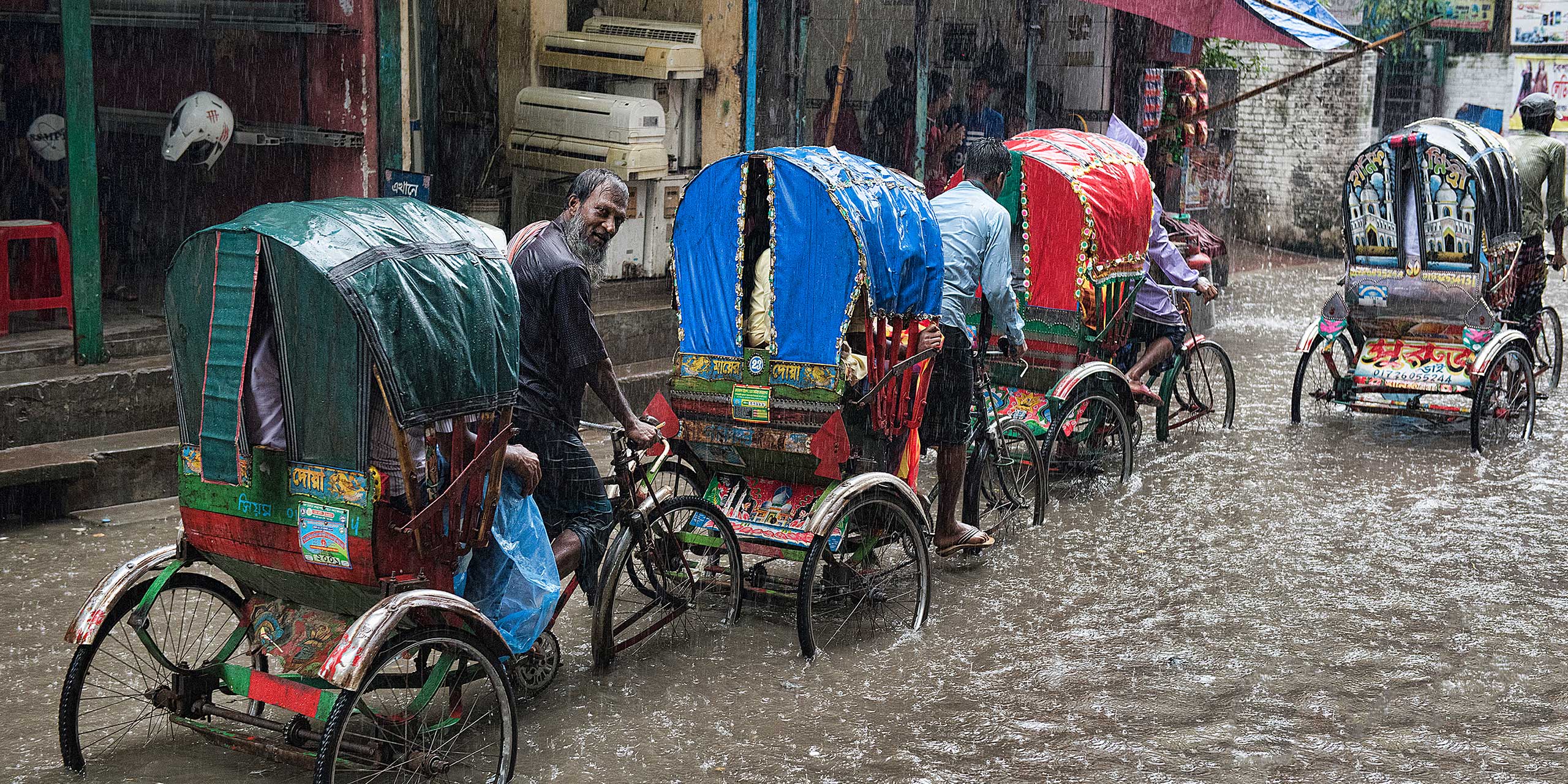
An airline inflight magazine asked me to do a story on the fabled Rocket paddle steamers that slowly cruise down the Buriganga River and into Bangladesh’s backwaters, so of course I jumped at the offer.
The airline would fly me over, and I’d get to travel on a classic river journey, leisurely cruising on a historical boat. However, there were a few items my editor and I failed to note.
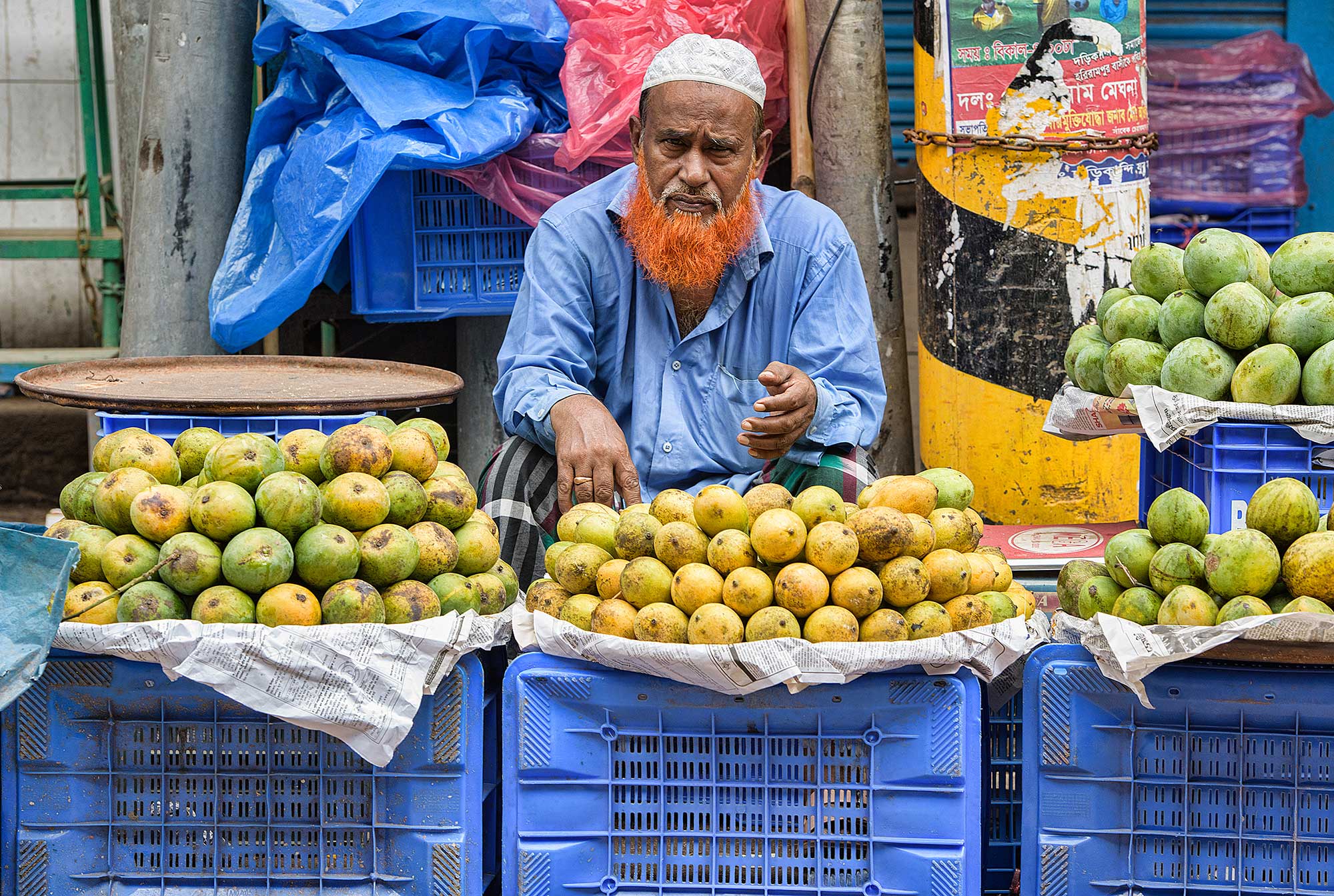
First off, the steamers are no longer powered by steam, but diesel, and there are only four of them left, three of which are in abysmal shape, and of course, my berth was on one of the older boats.
And of far graver significance, it was mid-July, and Bangladesh was deep in the heart of the monsoon. The trip was a complete disaster. Yet then again, the real adventures in life usually only happen when everything planned for goes wrong.
Bangladesh is about as far off the world tourist radar as one can get. Its main media headlines usually involve some sort of horrific flooding or food shortage or some other disaster.
Yet what I discovered was a vibrant and upbeat place where everyone makes the best of things, including the yearly deluge, and once my failed river cruise was aborted, I based myself in Dhaka and got to explore one of the world’s most densely populated and at the same time friendliest cities.
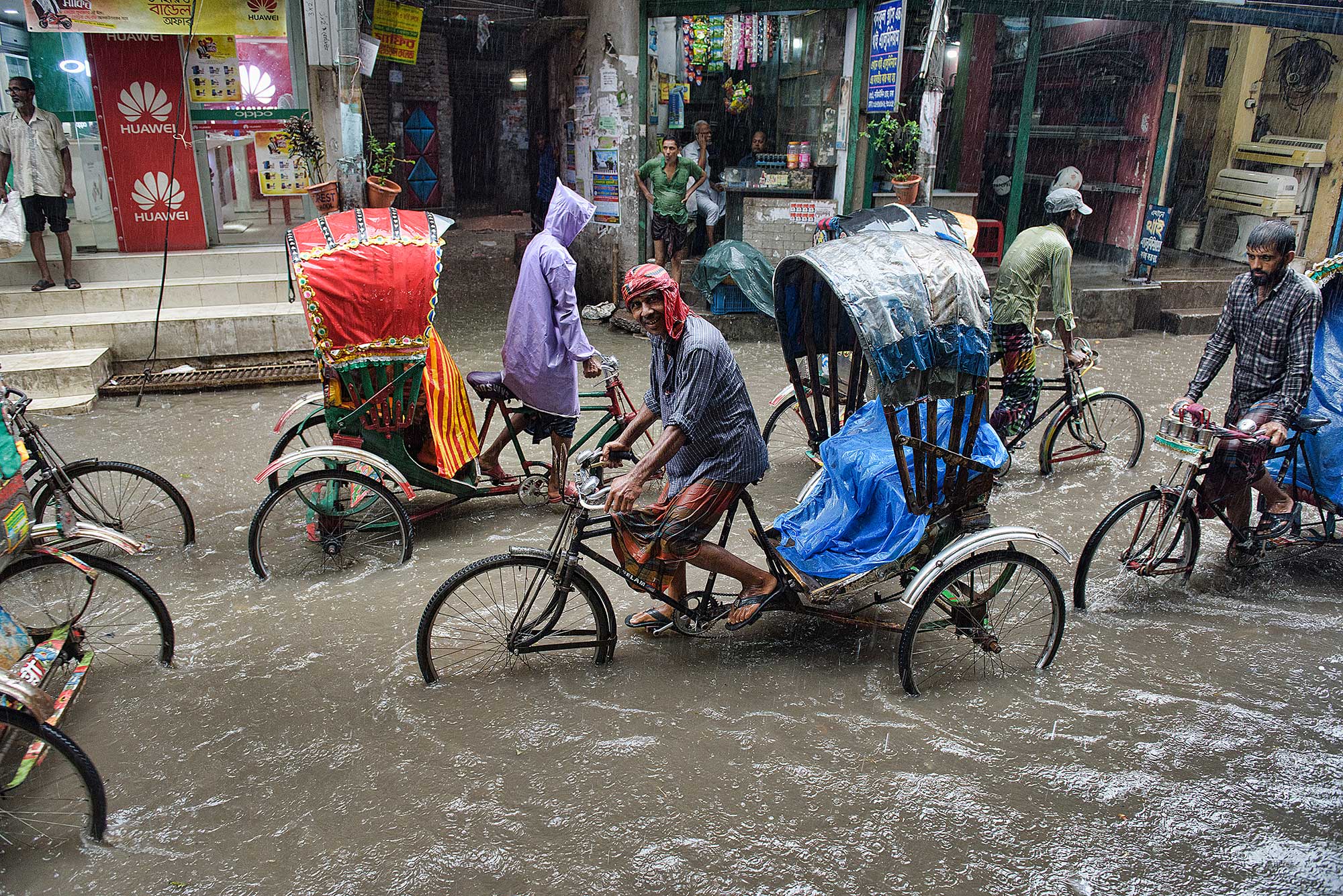
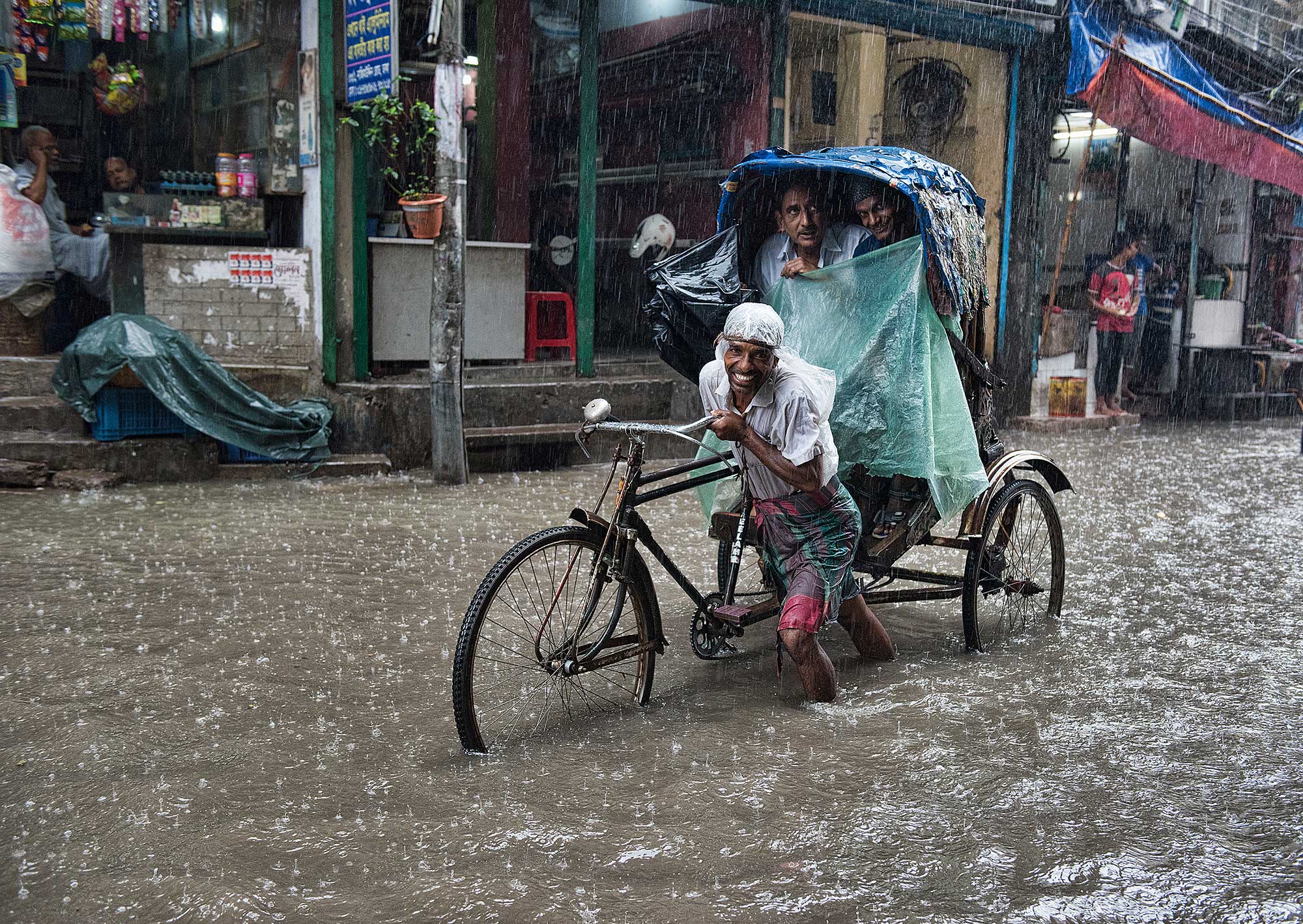
Dhaka is crowded and chaotic. Its population density is higher than Manhattan, and traffic crawls like a permanent accident on the toll pike. Yet once you surrender yourself to it, there’s plenty to see, as in Dhaka, there is always something going on.
It’s best to avoid taxis, especially in the Old City, known as Puran Dhaka, and hop aboard a bicycle rickshaw, the only vehicles in the narrow alleys of the old town that can get around, squeezing between buses and trucks, and diving down narrow passages just wide enough.
Rickshaws are a dying breed in most of the rest of the world. In India, you still see a few in Old Delhi, or in some cities where authorities haven’t banned them, and even Dhaka traffic controllers tried phasing them out during the pandemic, only granting licenses to a third of the 600,000-plus rickshaws gracing the city.
They are the optimal way to travel though, slowly, at one with the elements, and the drivers are an incredible source of information, stamina, and good cheer. During my first days in Dhaka, I was amazed to see what kind of conditions the rickshaw-wallahs as they are called were able to navigate in.
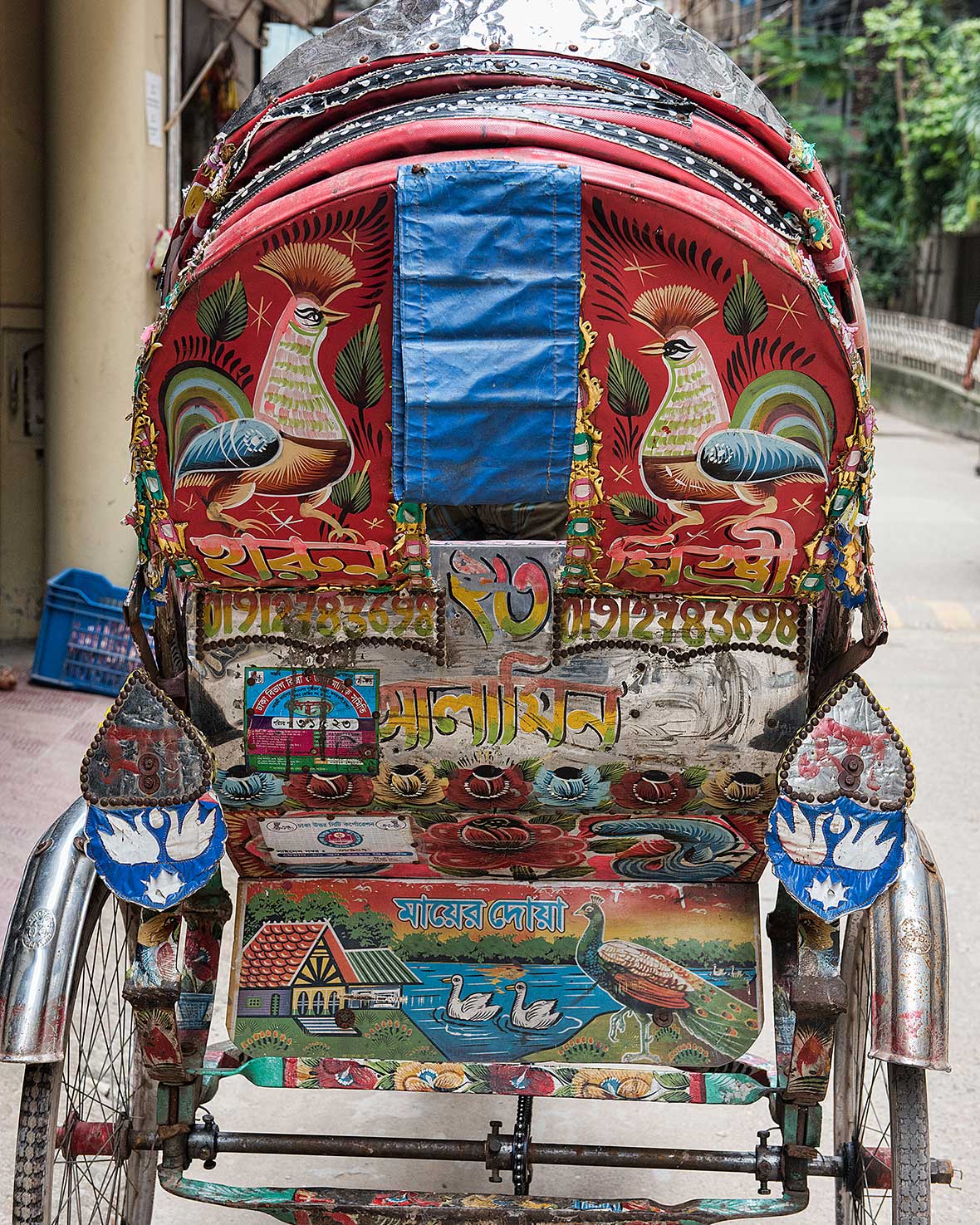
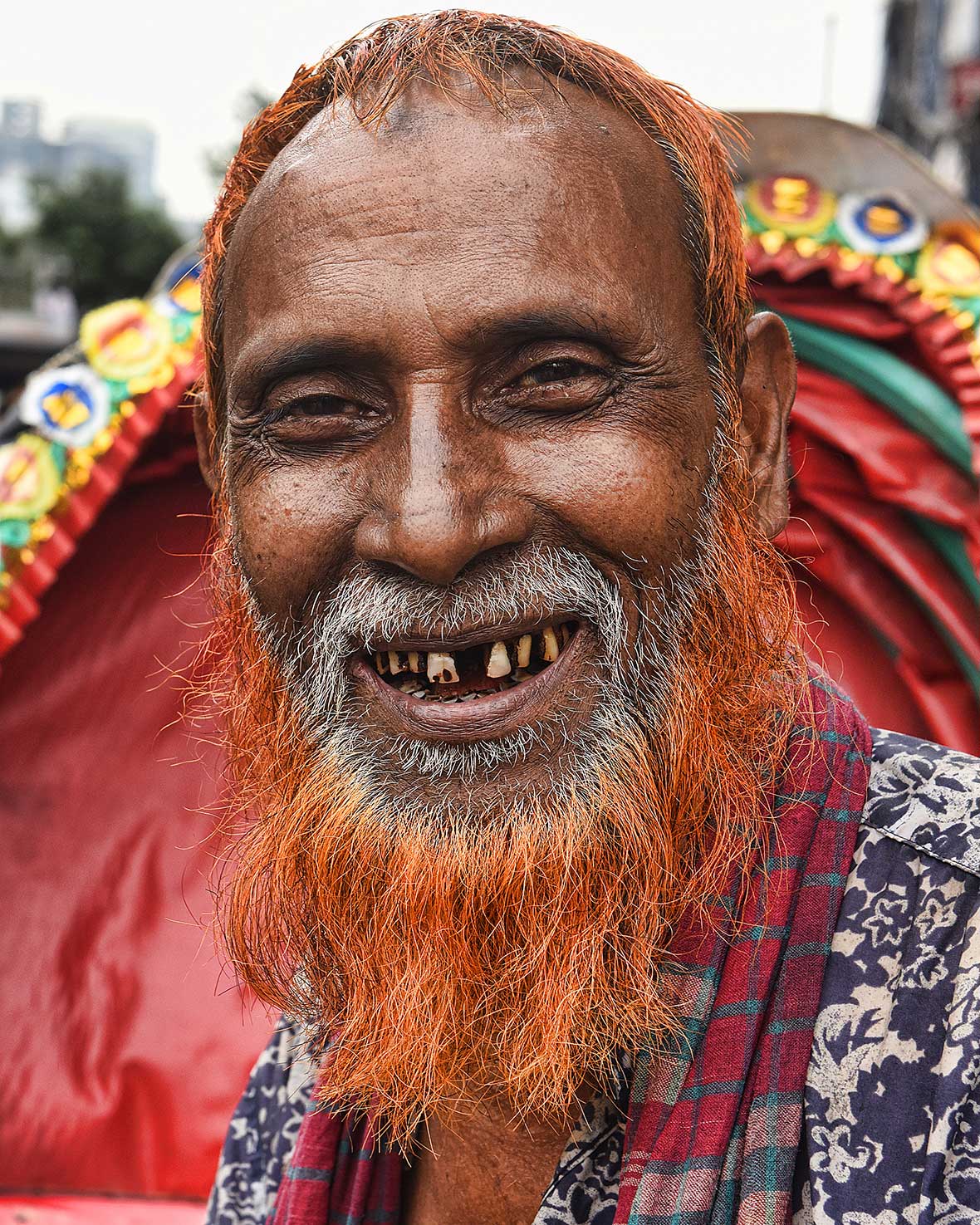
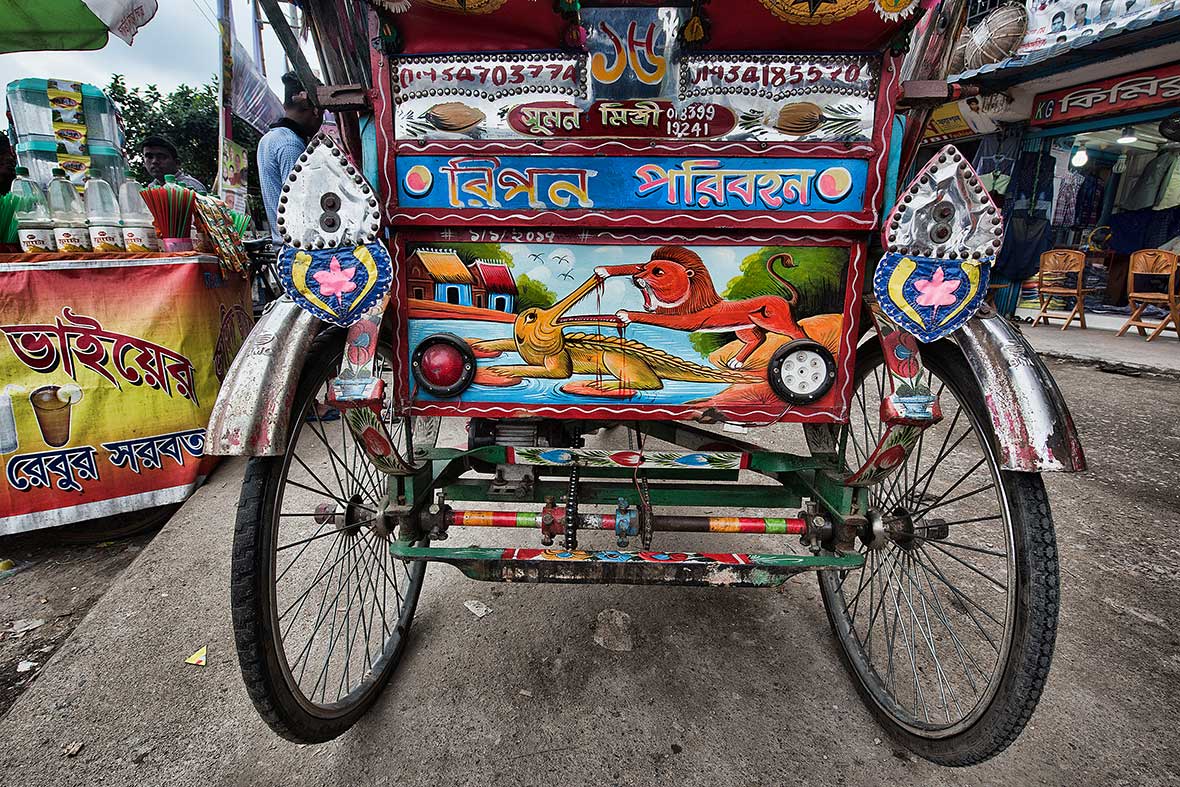
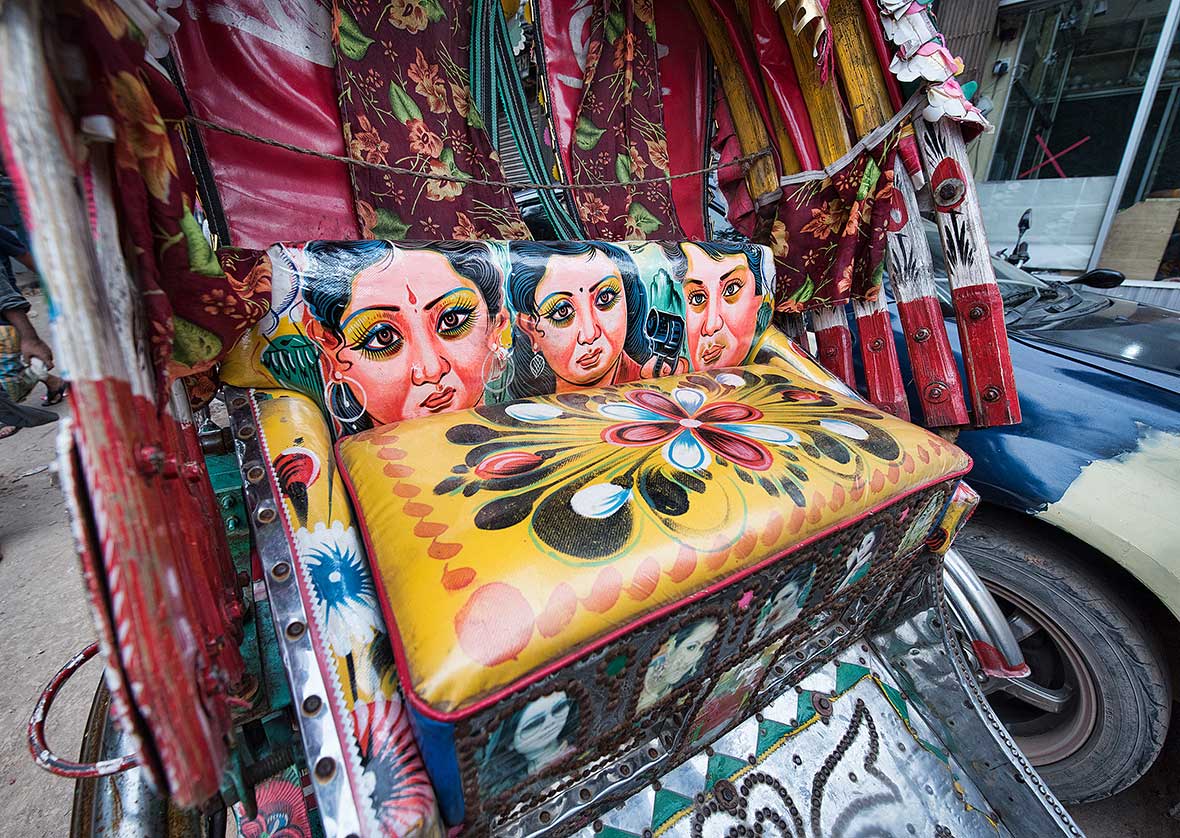
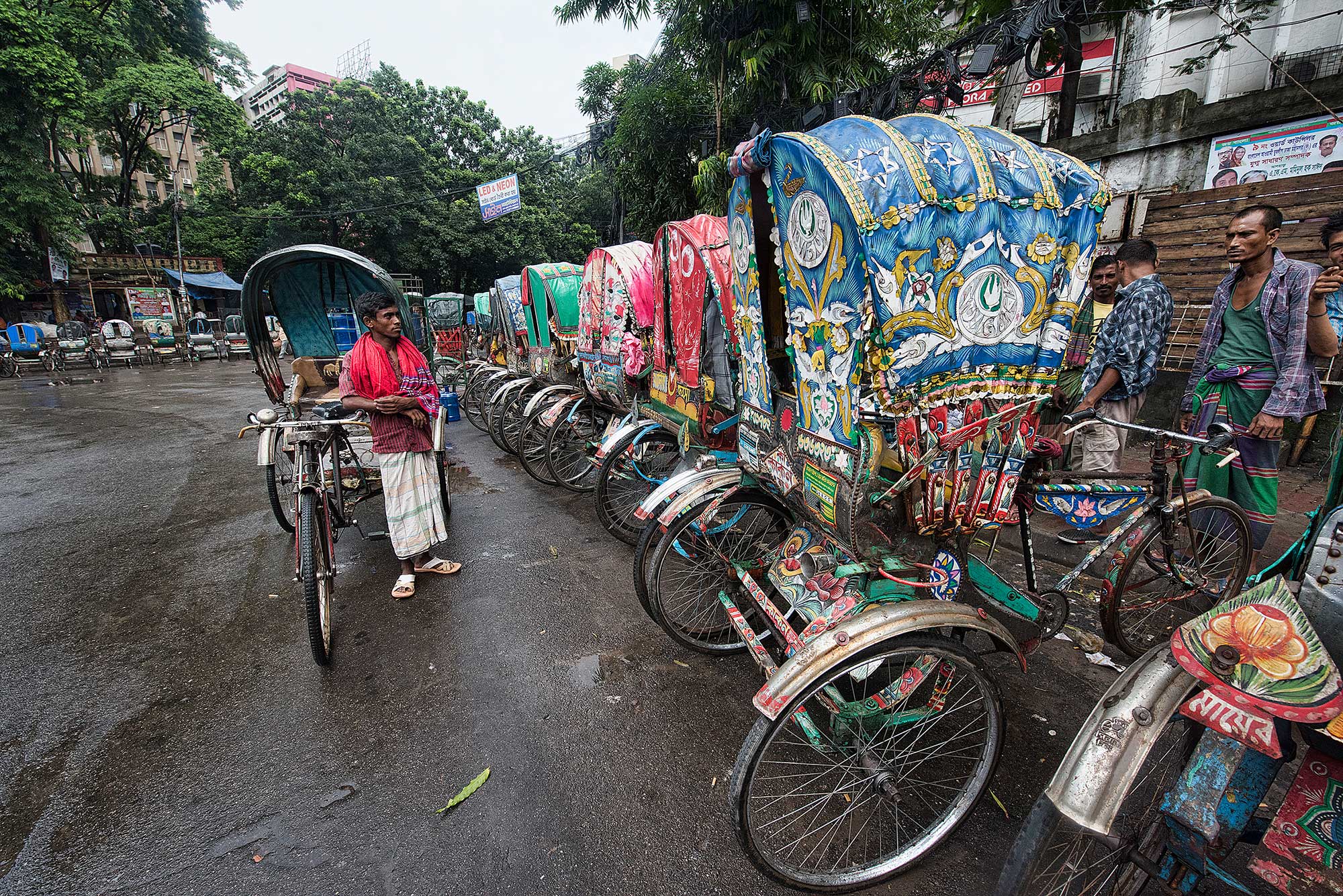
The monsoon in Dhaka is the real deal. 80% of the annual rainfall occurs here between June and September, especially in Puran Dhaka, the old city, which is completely underwater. It becomes risky to walk with water up to your knees and higher, cars often stall or collapse into potholes, and yet the rickshaws find a way to get through, rigging up plastic tarps to keep passengers dry, all the while the drivers laugh, make running commentary, and smile with heartfelt joy when you give them an extra tip in astonishment for what you’ve just been safely delivered through.
Perhaps just as stunning as the driving are the rickshaws themselves. Ever since independence from Pakistan, Dhaka’s rickshaws have been world-renowned for their superb artwork, with seats, hoods, and even wheels ornately painted with bright colors, along with the faces of movie stars, religious idols, with even political preferences and satire featuring in the avant-garde art.
While the rickshaw art trade gets passed down from master to apprentice, it’s only recently that they have come to be celebrated, with the Bangladesh National Museum opening a collection of rickshaw paintings and various NGO groups giving them recognition for their fantastic artwork. I was so enamored by the bright murals I saw, that after I commented thus to one of my drivers, he pedaled me over to Bangshal Road, which has now more appropriately been renamed Bicycle Street, where hundreds of artists can be found plying their trade, and where one can buy a souvenir seat or plate with favorite rickshaw art renditions.
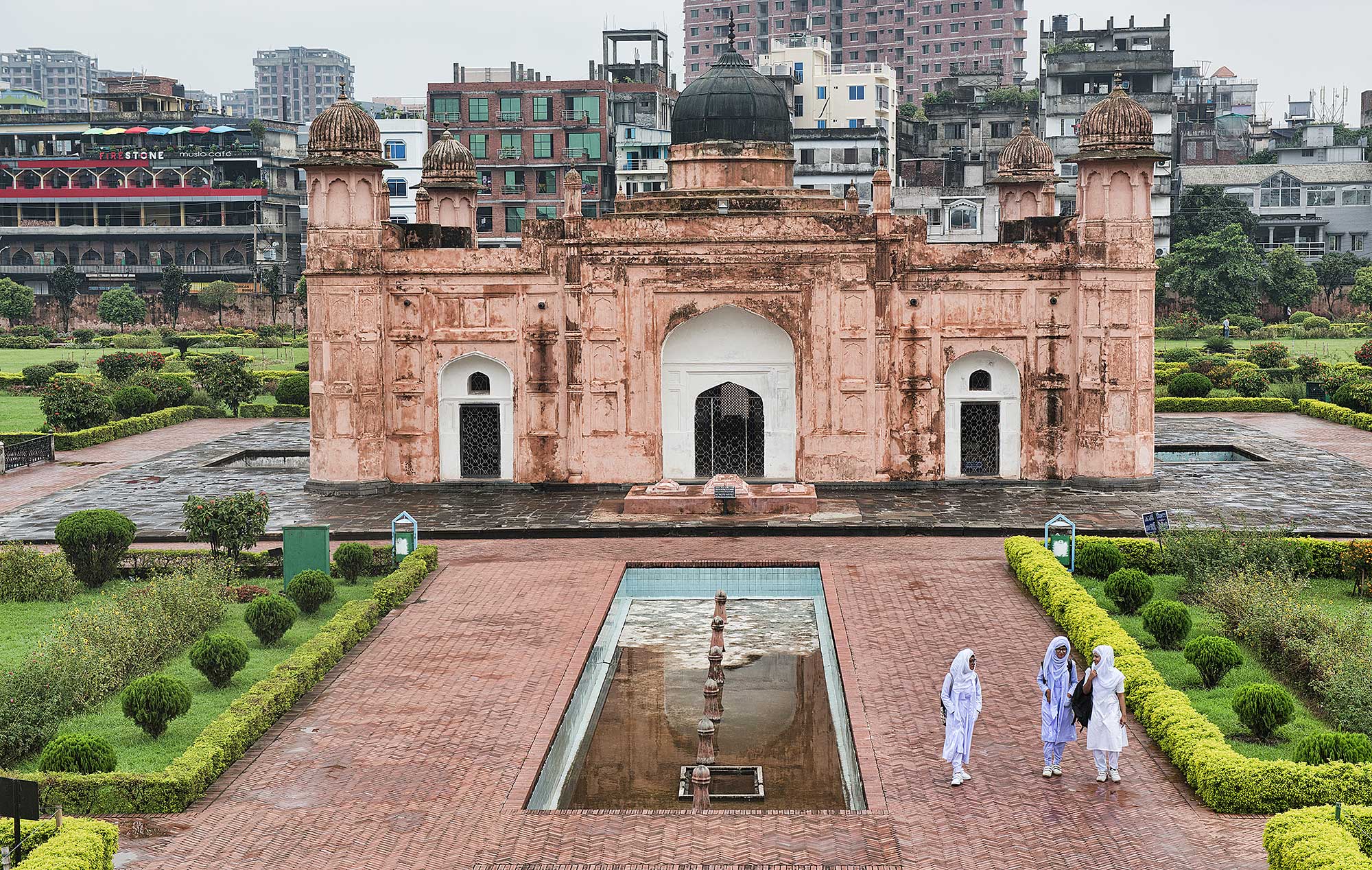
Despite the deluge, both my driver and I were having a wonderful time. There are few foreigners in Dhaka, most of them people doing business or working for embassies, and the majority reside in Gulshan, the upscale sector of Dhaka, where you’ll find elegant Japanese restaurants, dapper cafes, and the Sheraton, where the boulevards are wide, and traffic is almost non-existent. Head to Puran Dhaka though and as you make your way through the streets heads swivel, and people excitedly approach and ask where you are from, and whether they can practice English, show you around, or be of some kind of help.
In other countries, you learn to be wary of overly friendly locals and expect that anyone who wants to offer help or services is usually a tout trying to sell you something. But in Dhaka, it’s genuine friendliness and curiosity, and my driver was getting major kudos for being the one showing me around and attempting to keep me dry.
We passed by Lalbagh Fort, a magnificent 17th-century Mughal fort and mausoleum that was never completed, due to the death of Bibi Pari, the daughter of Shaista Khan, the Mughal general who was constructing Lalbagh at the time. Locals believe that there are secret passageways here that lead into India, and the gardens and quiet tomb here are an oasis of tranquility.
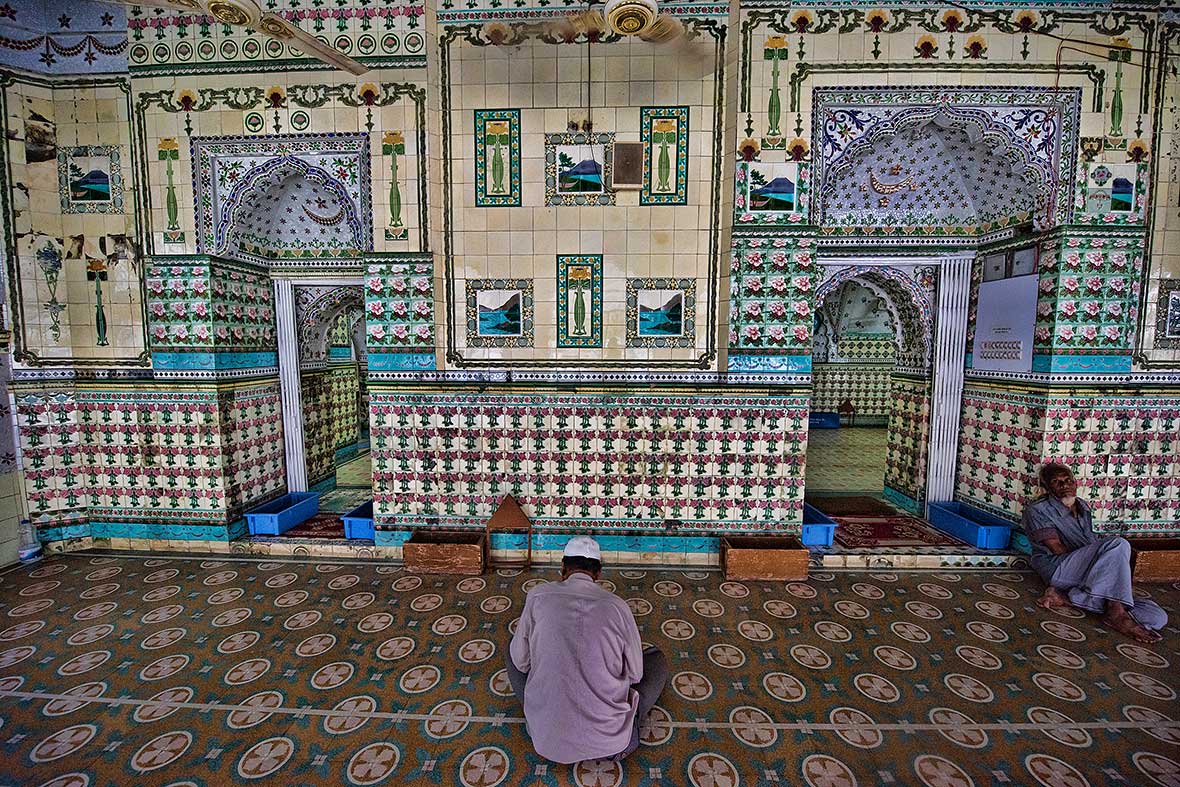
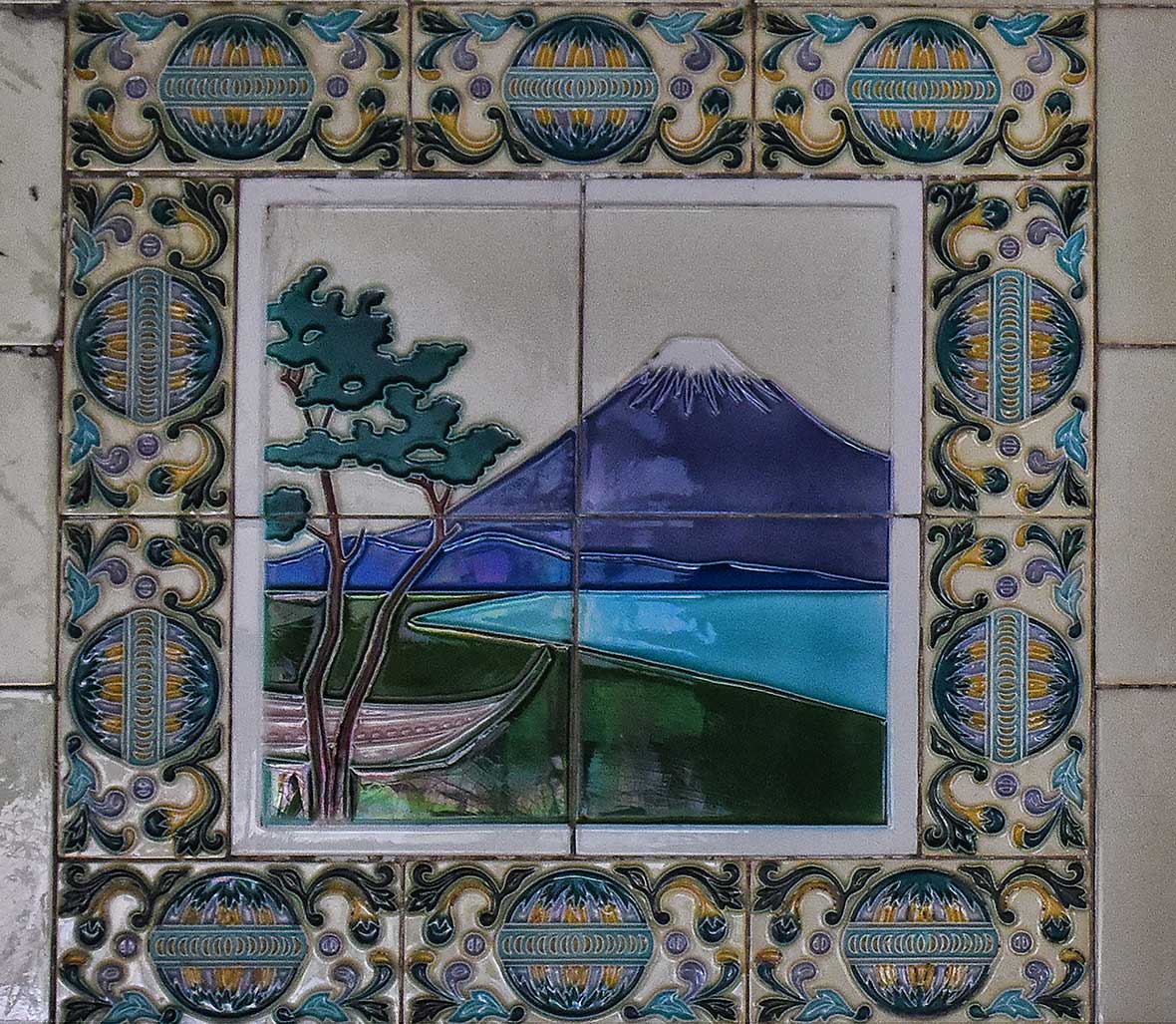
Part of the allure of Dhaka is precisely the clash of opposites. One goes from the mayhem in the streets to peaceful gardens and tombs. I found the same thing when my driver dropped me off for a look at the Tara Masjid, or Star Mosque. A couple of men sat silently praying, but otherwise, there wasn’t a soul around. The mosque is noted for its china-clay mosaic tiles, known as chini-tikri, of which there no longer are any artisans practicing the making of these tiles to be found in Bangladesh anymore. Even more unique, the mosque was redecorated with Japanese tiles. Thus in this Moslem place of worship one finds intricate tiles displaying motifs such as Mount Fuji or the famous Great Wave found on ukiyo-e woodblock prints.
I was famished after being cycled around town, and my driver again knew where to take me. Haji Biryani has been open since 1939 and remains in the hands of the now 3rd generation family owners. Haji specializes in mutton biryani, made from the family’s ancient secret recipe, dating back over a century, and the restaurant does a roaring trade of thirty-goats’-worth of meat each day, usually sold out by the afternoon. One of the old owners here sits in front of the shop, scooping out handfuls of the goat meat over rice from a large traditional silver pot, and I sat on a nearby stool gorging myself, no longer minding the persistent drizzle.
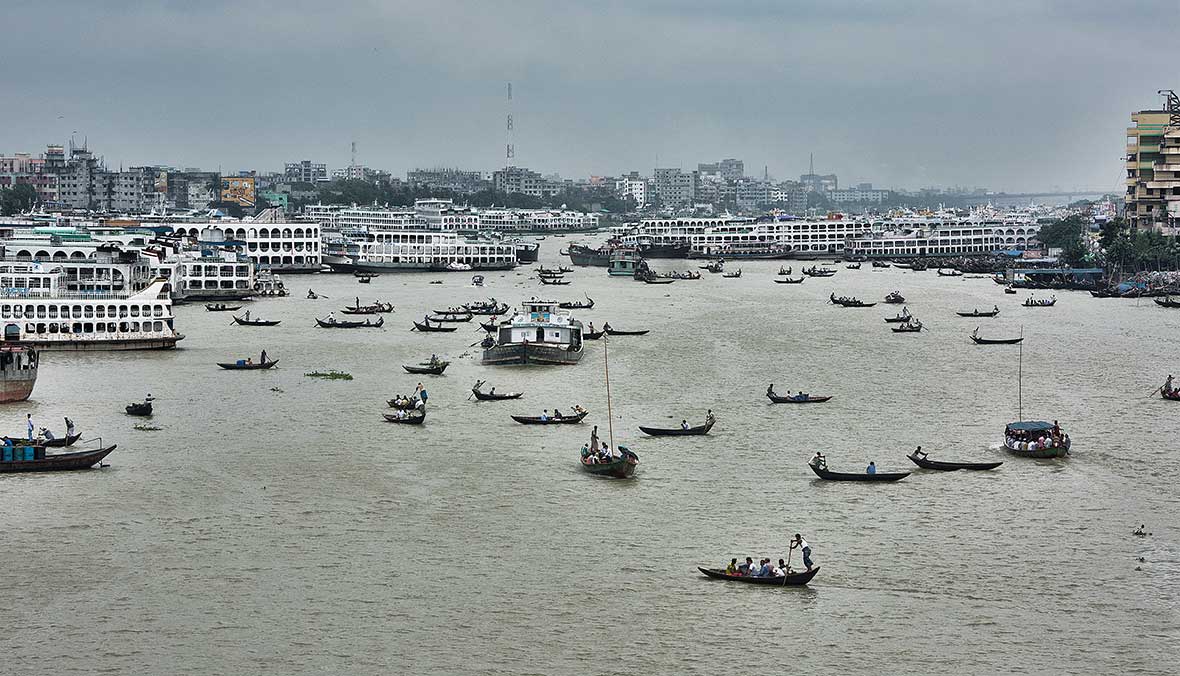
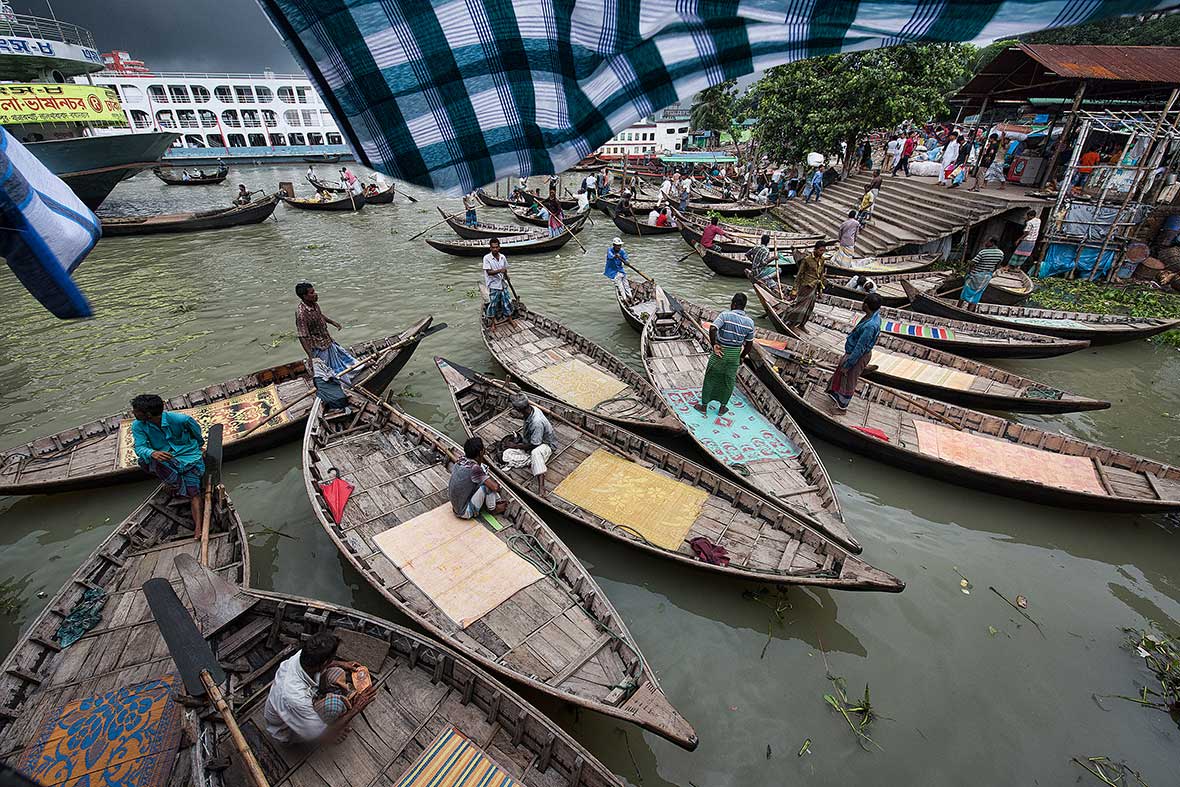
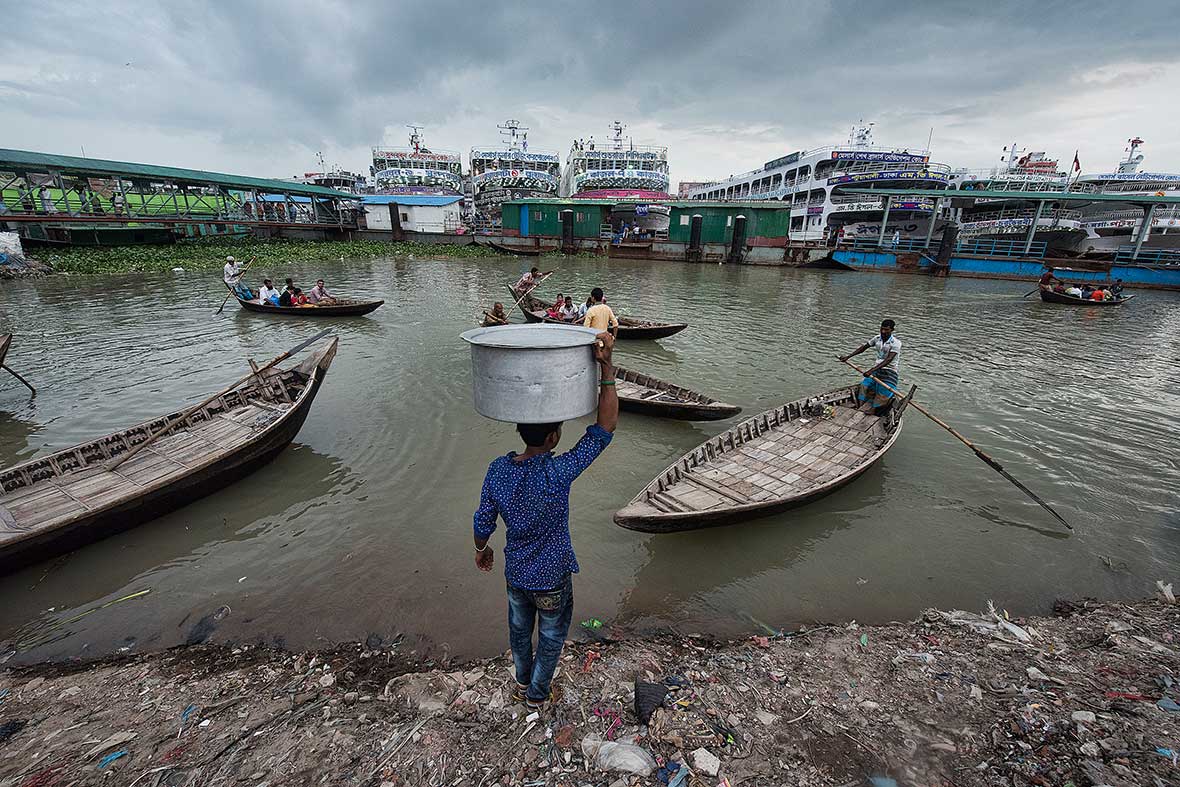
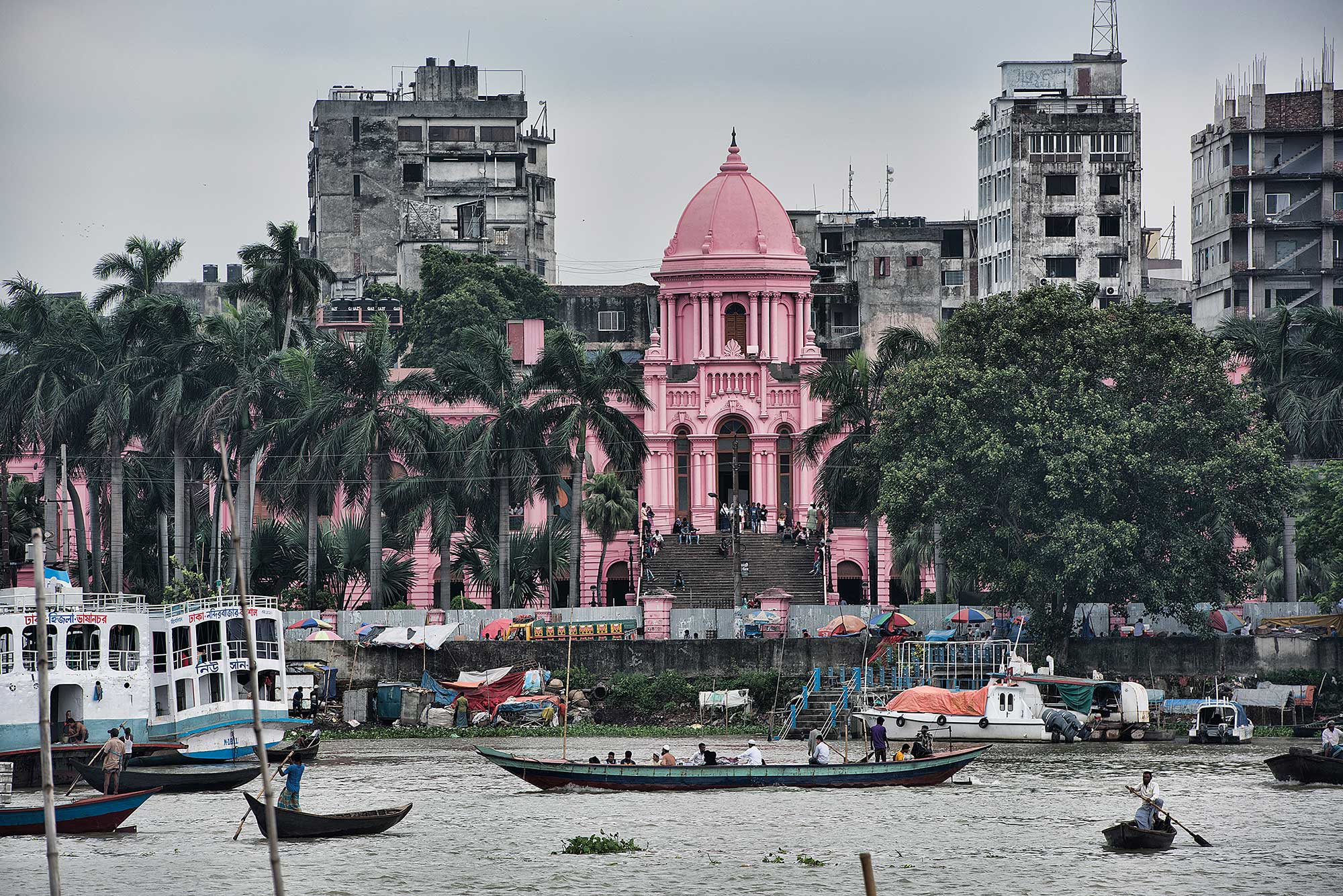
My final stop in Dhaka was Sadarghat, the main city port along the Buriganga River. Given that water is the lifeline of Dhaka, as well as being viciously present about a third of the year, it made sense to wind up my journey here. After all, this is where the Rocket steamers set sail from, and I grimaced as I saw a more upscale version of the ship than I’d taken. Of more interest were the thousands of small handmade wooden rowboats that ferry locals back and forth throughout the day. Packed to the gills with passengers and produce they navigated and weaved in between giant ferries and cargo ships as deftly as their rickshaw counterparts do on roads. And I was so impressed I even left the comforts of my rickshaw to go out for a ride, from where the views of the entire Old City, with the Neoclassical Pink Palace (an 1872 former Mogul governor’s residence) rising above everything, were magnificent.
Several people spotted the non-local and asked if they could buy me tea, and it struck me that one is never alone in Dhaka. There are some 21 million residents in Greater Dhaka, and by the end of my trip, I thought I’d met half of them, not gotten too wet, and had a swell time under the monsoon.
